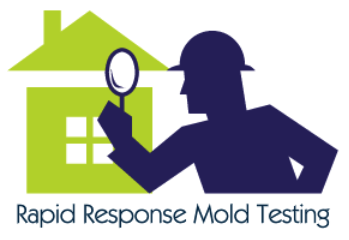Asbestos Testing
The Best in LA at Finding Asbestos
The Preferred Asbestos Testing Company Los Angeles, CA
Asbestos poses major health and environmental risk and is restricted in many countries. This is a naturally occurring mineral composed of microscopically small fibers that can cause many diseases, including asbestosis and mesothelioma.
Rapid Response Mold Testing provides a range of services that assist organizations and individuals when asbestos fibers are a health and environmental risk. Our professional technicians are trained to identify, monitor and design actions for remediation.
Dangers of Asbestos
Undisturbed, asbestos-containing products pose no threat. But asbestos fibers can probably be released into the air when they are interfered with, cut or removed without proper procedures. When inhaled, fibre and dust can cause cancer and other life-threatening conditions including mesothelioma, a type of asbestos-only lung cancer.
In the demolition of houses, all asbestos used in construction materials is released into the soil, polluting not only the demolition site but also the surrounding property. Asbestos poses danger when on the ground, during transport, or at a dumpsite where asbestos-containing materials except when removed and transported according to the Occupational Health and Safety (OHS) Regulations.
How to Identify Asbestos
The corrugated cement roofing sheets are among the most clearly recognizable asbestos materials. If cement-based items are believed to be present, samples must be taken to identify asbestos fibers positively.
Don’t touch the material when you suspect you found asbestos in your home. Look for signs of wear, like tears or water damage. Dust particles and fibers in the air would have ideally settled after 48-72 hours; however, the minor movement of the fiber could rebound from surrounding areas and into the air, given the small nature of the asbestos fibers. Restrict access to the area if the substance appears contaminated and
call a licensed asbestos tester to take samples for testing.
Asbestos is used in so many various materials. It can exposed when found in:
If a house or any other structure is to be refurbished or modified, there are significant chances of asbestos exposure. Anyone involved in the maintenance or repair of buildings should be aware of the risk of buildings containing asbestos, especially with old electrical equipment. It is unlikely that buildings constructed after 2000 contain asbestos. However, it is advised that unless it is known otherwise, it should be assumed that asbestos is present during refurbishing, modifying, repairing or maintaining a building. All areas must be marked with an asbestos sticker pending abatement.
When Is an Asbestos Test Needed?
If you think you may have asbestos, especially if you live in an old house or apartment, the best place to start is home inspections. The only test for the mineral should be a trained asbestos professional, as the process disrupts the fibers and can result in an exposure.
The first step is to inspect, evaluate and assess the asbestos risk. If the material that contains the asbestos is clearly damaged and poses a risk of exposure, you may want to limit entry into that particular room where the asbestos was detected or leave the house so no one will be exposed. Call a trained and licensed expert in asbestos abatement, who will:
Home Testing for Asbestos in Los Angeles
Usually, a visual check of your house is not enough to determine whether it contains asbestos. We offer asbestos home testing services where our certified inspector checks your home for asbestos fibers using approved methods of analysis including Polarized Light Microscopy (PLM) and Transmission Electron Microscopy (TEM).
Our Asbestos Testing Process
At Rapid Response Mold Testing, our asbestos testing provides a complete suite of services including testing, inspection and compliance. We can identify and evaluate all types of asbestos in almost every type from soils to concrete including chrysotile, amosite, crocidolite, tremolite and anthophyllite. An inspection of the asbestos can be done before and after removal of asbestos. Some of the products and places where we test for asbestos include:
Asbestos Air Monitoring
Air monitoring of asbestos is used to detect levels of asbestos fibers within the atmosphere. Airborne particles are collected and prepared for analysis by our trained asbestos analysts by drawing air through a filter over a fixed period of time. Our qualified analysts use handheld cutting edge technology to record all relevant details and photographs for all stages of the work where necessary.
Asbestos air testing confirming that a suitable level of personal protective equipment (PPE) or respiratory protective equipment (RPE) has been selected. It is also is necessary to determine whether asbestos fibre levels are safe for occupancy.
Our Professional Asbestos Services in LA
- Asbestos risk assessment and management surveys
- Certificates of Reoccupation
- Asbestos training
- Analysis of building material samples by a qualified third-party laboratory
- Air monitoring and fiber counting
- Asbestos management plans
- Asbestos refurbishment and demolition surveys/asbestos sampling
- Project management of asbestos removals, both licensed and non-licensed
All relevant regulations on occupational health and safety in Los Angeles and the greater Southern California region apply to our asbestos abatement processes. All our reports are certified by the right legal procedures.
Health Risks of Asbestos Exposure
In the United States and other parts of the world, asbestos is the largest source of work-related deaths. According to a recent study, an estimated 39,000 in the U.S. died from asbestos-related diseases.
In general, a one-time exposure to asbestos is not a serious risk, except in extreme circumstances where toxic dust clouds the air. The latency of asbestosis is long, which usually means that the condition develops only years following asbestos exposure. In most cases, asbestosis signs occur between 20 and 30 years from initial asbestos exposure. Prolonged exposure can lead to asbestos-related lung cancer, non-malignant pleural disease, asbestosis or fibrosis (scarring) of the lungs, and mesothelioma - a cancer of the inner lining of the chest wall or abdominal cavity.
Common Symptoms of Asbestosis
While the severity and frequency of symptoms may differ between patients at diagnosis, the most common symptoms of asbestosis are as follows:
- Swelling in the neck or face
- Shortness of breath
- Hypertension
- Loss of weight/appetite
- Crackling sound when breathing
- Difficulty swallowing
- Blood in sputum
- Finger deformity
Asbestos in the Workplace
If the recent exposure to asbestos is a matter of concern, you should:
- Notify your boss of the asbestos risk.
- Consult your medical doctor and report any symptoms of ill health as soon as possible.
You will also provide information on the date, period and type of asbestos and allow your medical doctor to report the possible asbestos exposure. If required, your medical doctor will refer you to a specialist.
Why Choose Rapid Response for Asbestos Testing in Los Angeles?
- A Rapid Response. Once we receive your call, we can often be there same-day or within 24 hours. That's what we call Rapid Response.
- We Give You All the Details. You can make informed choices on how to best handle your mold problem with our comprehensive reporting and assistance with next steps.
- Licensed & Certified. As a certified CMI (Certified Mold Inspector) with InterNACHI®CMI (International Association of Certified Home Inspectors), we are licensed for post mold remediation inspection and clearance services, asbestos testing, and lead based paint testing.
- Experience & Training. Our technicians know inspections like the back of their hands. Since 2007, we have provided expert, professional testing.
- Guaranteed Satisfaction. Our reviews from satisfied customers and our A+ rating with the Better Business Bureau are very important to us.





